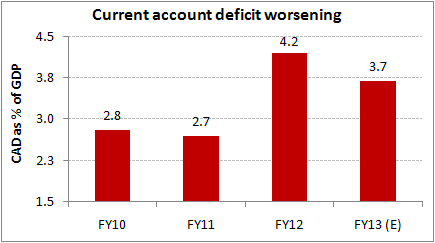As per the latest Barclays Report CAD deficit of India is 60 billion dollars. With an estimated increase that was previously predicted to $ 45 billion deficit. Now understanding the Barclays report in-depth, India’s present current account deficit (CAD) is expected to soar to 60 billion $ in the current fiscal (2021-21).
In this recent report by the British banking services giant Barclays, the deficit CAD has been revised to an upward trend from $ 45 billion to 60 billion $. If the report estimates are to come true, the CAD size will be approximately around 2 percent of the gross domestic product (GDP) of the country by 2021-22.

Now let us know what a current account is
A current account basically reflects the net difference between various foreign exchange reserves that inflow into a country over a period of time. The CAD (Current account deficit)is a situation where payments to other countries are higher than expected. Conversely, if the payments received into the country are higher than the expected payments, it is known as the current account surplus.
Read More: High Demand for Crypto Experts in Coming Years
In this current financial year (April 2020 – March 2021) the current account was in surplus also in the wake of the current pandemic challenges including a sharp drop in imports. The first quarter Q1 of 2021-22 (April – June) clocked in a surplus that was valued at $ 102.2 billion (0.9% of GDP).
As per initial estimates, the current account surplus would be recorded in 2021-22 overall. However, the situation has changed drastically. According to analysts rising international prices of key import commodities such as crude oil, coal and metal are the main driving factors of the current account deficit.

The country’s interests are expected to be protected from untimely international fluctuations by India’s foreign exchange reserves of over $ 600 billion. It is very important to highlight that India has sufficient forex reserves for almost about 15 months of import. The forex reserves ratio has risen to almost 22 percent when compared to the 2013 levels of forex reserves that were 15 percent of GDP.
1 Comment